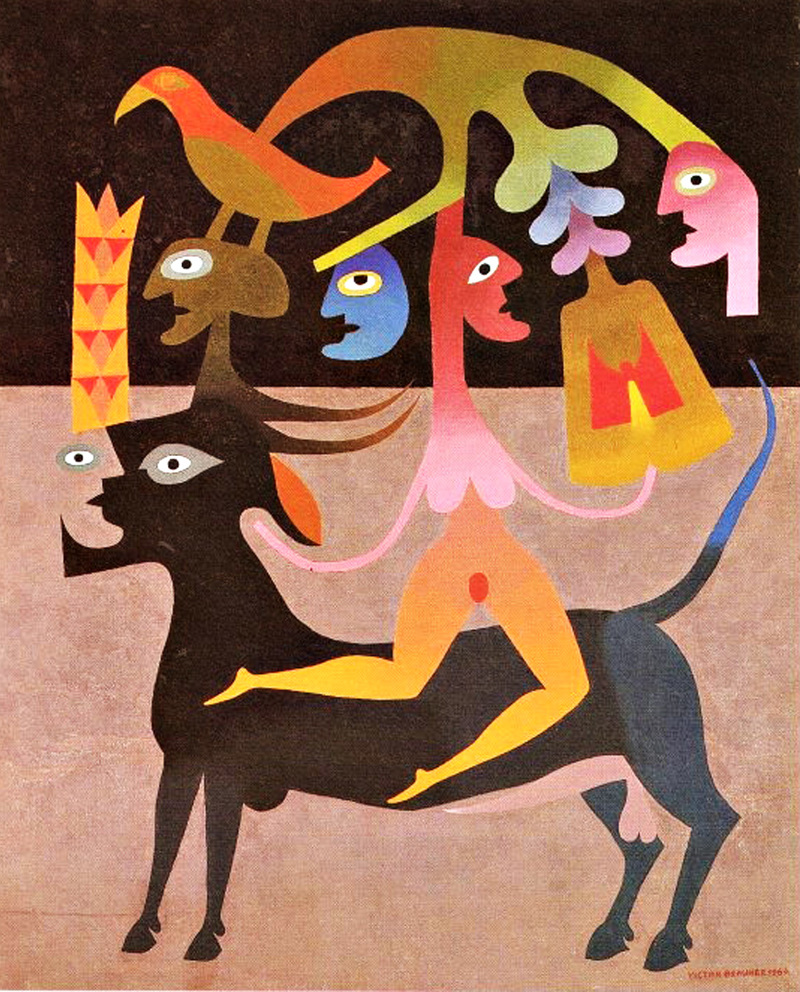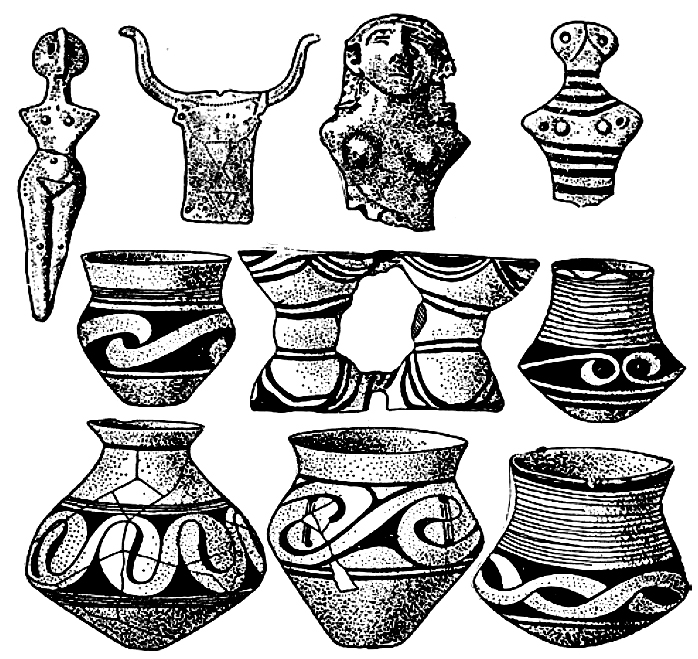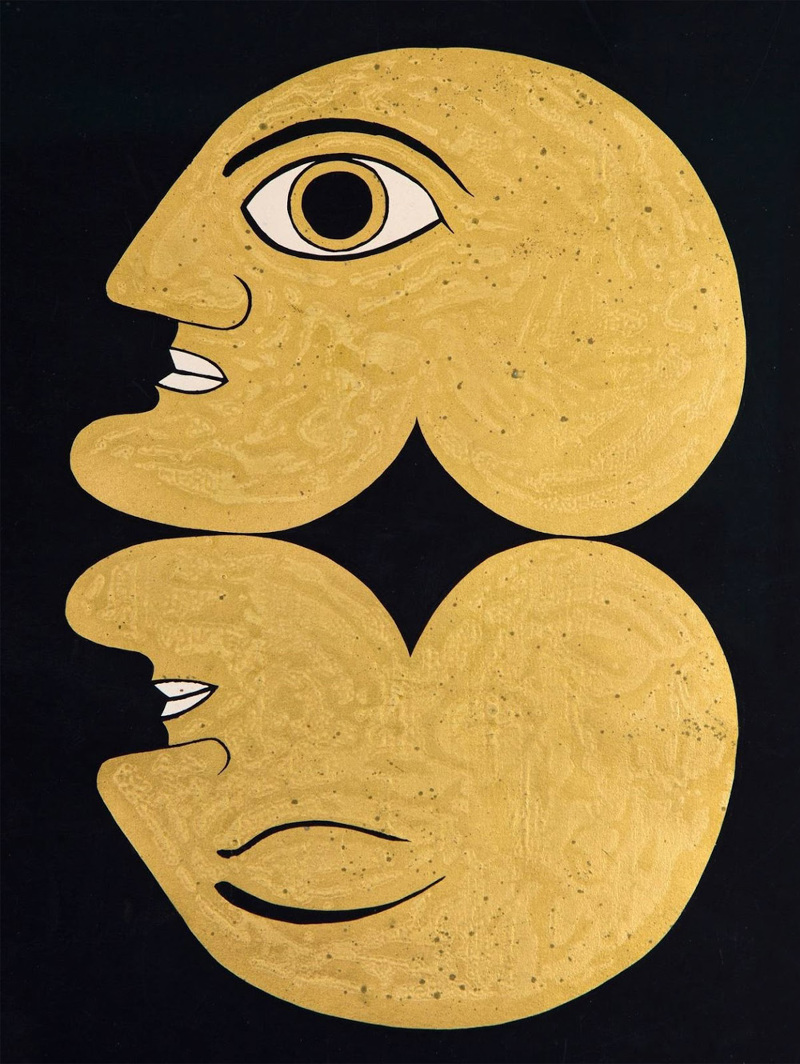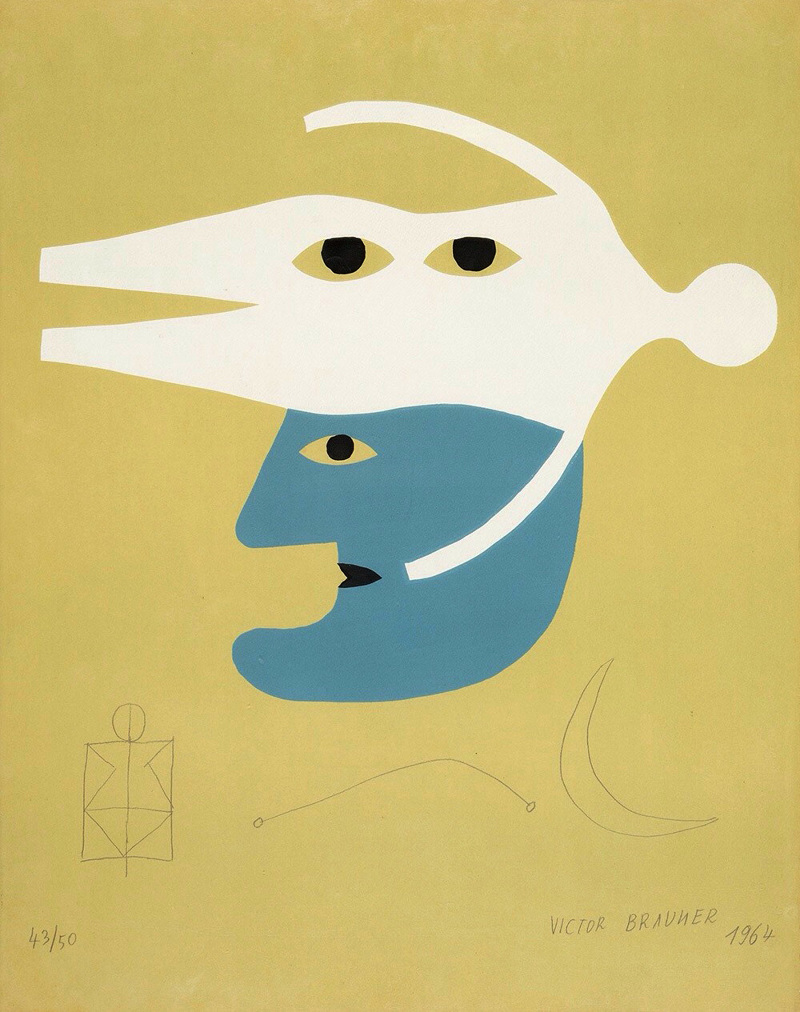victor brauner
︎Artist, Painting, Surreal
︎ Ventral Is Golden
victor brauner
︎Artist, Painting, Surreal
︎ Ventral Is Golden
︎ Ventral Is Golden
“The flutter of ashes extinguished memories of fire, over limestone tattoos among the shoal shirts of clear water, vegetal worms squirming around pebbles, the whooshing of buckets dropped into wells. But all this happens in the shade of a green tomato, and one good day.”
- Gellu Naum

Romanian folklore and poetry, symbolic iconography, mythical creatures and a deeply psychological narrative couched in underworld abstractions and earthly premonitions are what constitute the work of Eastern European surrealist, Victor Brauner. He was born in the area around Piatra Neamț, thought to be one of the oldest inhabited areas of Romania, an ancient place with some of the earliest traces of human culture dating back to around 100,000 years BC.
From his childhood, divided between Romania and Germany, Brauner could remember the peasant rebellions in Moldovia, his father’s séances, which he attended in secret, and the announcement of the end of the world as a result of the passing of Halley’s Comet in 1910. “This formative interest in spiritualism and magic influenced Brauner throughout his career. Additionally, the Hasidic Judaism with which he was surrounded in Moldovia instilled in Brauner an interest in the Kabbalah, and its motifs appear in much of his art.” (source).
Brauner’s inspiration for the recapitulation of the archaic was propelled by the spirit of the early Cucuteni–Trypillia culture (pictured below) that first settled in his home town during the late Paleolithic era, and who’s cultural motifs were shared across parts of Ukraine, Moldova and even felt in regions of Russia, China and later in the British Isles as part of a unified pyschology of an ancient goddess culture that typified tribal and early agrarian socieites throughout Eurasia.
Memories of a lost and largely unacknowledged culture that contained complex philosophy, art and cosmology, and a subsequent break from those ancient traditions, could have been a subconscious urge that articulated itself through Brauner’s drawings and sculpture, and summed up in Brauner’s statement that "each painting that I make is projected from the deepest sources of my anxiety..." His close relationship with Romanian poet, Gellu Naum, must have also influenced his worldview as communist Romania had become, in Naum’s words, ‘the castle of the blind man’, in which a vital attempt to re-establish "contact" between human beings: "like fire, like panic, like love, like water, like revolt..." was necessary (source).





Between 1919 and 1921, Brauner studied at the Bucharest School of Fine Arts, from which he was expelled because of the non-academic nature of his painting.
He joined Romania’s clandestine communist party, which he would abandon at the height of the Moscow Trials.
After his return to Paris in 1938, during a quarrel among Surrealist friends, Brauner was hit by a glass as he tried to separate Óscar Domínguez and Esteban Francés, an incident which left him permanently blind in his left eye. With reference to his 1931 self-portrait, ‘Self-portrait with enucleated eye‘, (made seven years earlier), this accident would figure as one of the pinnacles of premonition within the history of Surrealism.
After the 1940 defeat and partial occupation of France by the German army, Brauner sought a route to America and out of France via Marseille. After repeatedly failing to leave, he acquired false documents and settled for the duration of the war in the southern region of Gap. The precariousness of his life forced him to adapt and make use of the few materials available to him, leading to his discovery of drawing with candles and then painting with wax, a material to which he attributed alchemical, even esoteric value.
Throughout his life, Brauner perfected this technique and its use, often combining the somewhat rustic nature of the material with a sumptuous refinement and treatment of colour. Visually, as with the lyrical style of Naum’s poetry, Brauner would call upon the vast inventory of archetypes and motifs held within the Tarot, beyond fixed cultural perspectives of space and time, and “without center and without margins (without “centru şi început” ‘center and beginning’ to paraphrase one of Naum’s titles), or better yet “un cerc cu centrul pretutindeni” ‘a circle with its center everywhere,’ a poetry of networks.” (source).
He joined Romania’s clandestine communist party, which he would abandon at the height of the Moscow Trials.
After his return to Paris in 1938, during a quarrel among Surrealist friends, Brauner was hit by a glass as he tried to separate Óscar Domínguez and Esteban Francés, an incident which left him permanently blind in his left eye. With reference to his 1931 self-portrait, ‘Self-portrait with enucleated eye‘, (made seven years earlier), this accident would figure as one of the pinnacles of premonition within the history of Surrealism.
“His life forced him to adapt...leading to his discovery of drawing with candles and then painting with wax, a material to which he attributed alchemical, even esoteric value.“
After the 1940 defeat and partial occupation of France by the German army, Brauner sought a route to America and out of France via Marseille. After repeatedly failing to leave, he acquired false documents and settled for the duration of the war in the southern region of Gap. The precariousness of his life forced him to adapt and make use of the few materials available to him, leading to his discovery of drawing with candles and then painting with wax, a material to which he attributed alchemical, even esoteric value.
Throughout his life, Brauner perfected this technique and its use, often combining the somewhat rustic nature of the material with a sumptuous refinement and treatment of colour. Visually, as with the lyrical style of Naum’s poetry, Brauner would call upon the vast inventory of archetypes and motifs held within the Tarot, beyond fixed cultural perspectives of space and time, and “without center and without margins (without “centru şi început” ‘center and beginning’ to paraphrase one of Naum’s titles), or better yet “un cerc cu centrul pretutindeni” ‘a circle with its center everywhere,’ a poetry of networks.” (source).








Further Reading ︎
Conceptual Fine Arts
The Art Story, Artist Bio
The Last Surrealist, Gellu Naum, essay